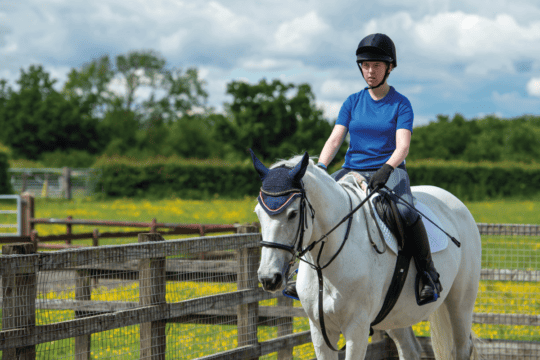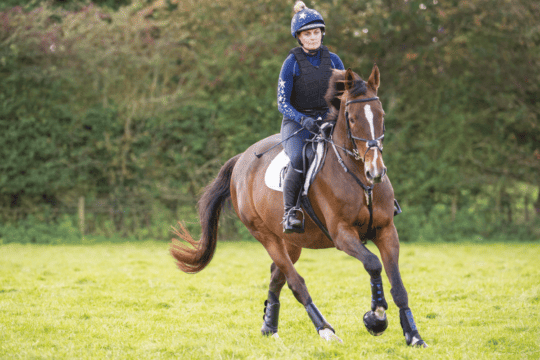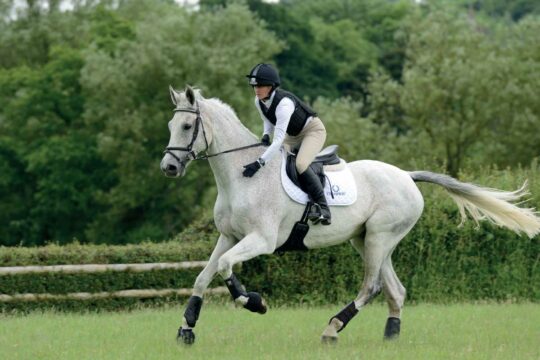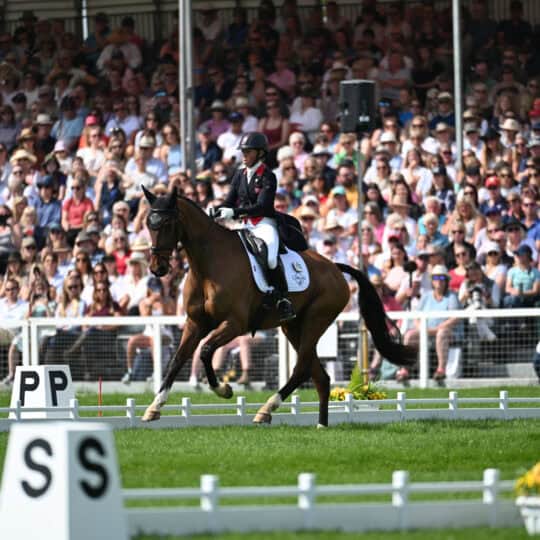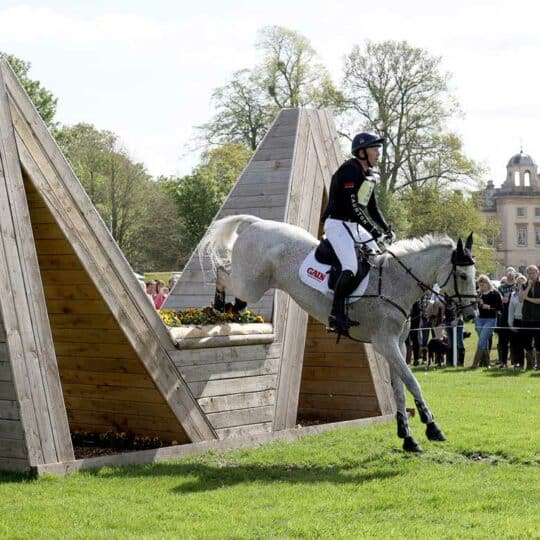Ever wondered what’s going through your horse’s mind? Learning to think along the same lines as him will help you build a better relationship and effectively deal with potential problems

You know your horse is a prey animal who has evolved to live in a herd and that he has a flight instinct when faced with danger, but it’s easy to forget this when you’re dealing with him on a day-to-day basis. Our horses have become so accustomed to
domesticated life that these natural instincts aren’t brought to the fore very often, so we tend to find ourselves treating our horses in a way that we like to be treated, communicating with them in a way that makes sense to us and expecting them to behave the same as we do to certain situations.
However, your horse’s natural instincts are still deeply ingrained in him, shaping his behaviour and how he sees the world. Because this fact slips to the back of our minds, misunderstandings and frustrating situations are common. I’m sure we’ve all heard someone say that their horse is doing something deliberately to be difficult or because they know they’re running late, if we haven’t said it ourselves.
Keeping in mind the differences between your horse and yourself can lead to a much happier and more harmonious partnership, and you may end up finding the cause and solution to any behavioural issues that have crept in. It just takes a little more thought.
How horses think differently
As much as you wouldn’t like to think of yourself in this way, humans are predators. While we love and care for our horses in the best way we can, and wouldn’t dream of harming them, we still behave like a predator around them because our instincts are ingrained in us as much as our horses’ are in them.
Even looking at how we spend our days highlights huge differences between us. The human day tends to be task driven, working purposefully towards goals such as putting the washing on, getting to work and making something to eat. The main focus of your horse’s day, however, is staying alive, which includes eating, drinking and, most importantly, looking out for potential danger.
Imagine yourself walking down a busy street. You’re probably moving through the crowds confidently, eager to get to a particular shop or meet a friend. Now imagine your horse walking down the same street. With his main motivation being to look out for danger, not get a task done, his experience will be very different, with a sea of potential dangers, including cars, noisy buses and people, coming at him from all angles.
Seeing eye to eye
There are lots of common scenarios that cause frustration for horse owners and most of us will have experienced some, if not all, of them. But if you take a step back and put the situation into context for your horse, his irrational behaviour suddenly becomes a lot more rational and you can start to help him work through it. Here are a few scenarios to get you thinking like your horse…
On high-alert
While out riding, your horse suddenly stops and stares, his head raised, ears pricked and
heart beating fast. He refuses to walk forwards and becomes agitated
• Your view You can’t see or hear anything that might be upsetting him. Something’s obviously worried him, but he’s overreacting because there’s certainly nothing nearby that could be a cause for concern.
• Your horse’s view His sense of sight, hearing and smell are highly tuned for spotting danger, particularly from a distance, and this means that he’s likely to see, hear or smell things that you aren’t even aware are there – raising his head gives him an even better view of what’s ahead. Even though you can’t see it, his reaction to the potential threat could be justified and might have saved his life in the wild.
On the run
You’re riding up the road and a crisp packet blows out of the hedge into your path. Your horse stops suddenly, whips round and tries to make a hasty retreat
• Your view It’s only a small bag, he’s seen lots of bags before and they’re not normally a problem, so why is he being so silly about this one? He even walked past the flapping haylage bale in the yard on the way out without any problems.
• Your horse’s view Although he’s seen bags before and has learnt that they don’t usually pose a threat, they all look different. How does he know this one isn’t dangerous? Plus, the surprise of it emerging from the hedge mimics something leaping out at him, so that in itself will cause him alarm.
In response to a fright like this, horses don’t take any risks, so tend to run away first, then stop once at a safe distance to turn and look at what the potentially scary thing is. In the wild, stopping to look before turning tail could prove fatal.
Going it alone
You catch your horse from the field and as you start to walk away, he becomes agitated and starts calling out. He also won’t be left alone in the field and is trickier to ride on his own
• Your view It’s not always possible for him to have a horsey friend present and it’s frustrating that he won’t settle on his own – handling him when he’s like this can be really difficult. You’ve had him for years, and he knows that nothing bad is going to happen and that he always returns to his friends.
• Your horse’s view His natural instinct to be in a herd for safety is kicking in. For horses it really is safety in numbers, with everyone looking out for each other. When he’s on his own he’s worried about being able to keep himself safe and needs to be on high alert for danger at all times. Being alone can be very dangerous for a horse in the wild – he might be reunited with his friends later on, but will he survive until then?
Into the dark
Your horse is worried about going into a trailer or dark stable and when he finally does go in, he seems really worried and unsettled
• Your view He’s never had a bad experience and there’s nothing scary about it. You’ve even made it cosy with lots of bedding, and put in a nice feed and big haynet to entice him. What’s the big deal?
• Your horse’s view His eyes take up to 20 minutes to adjust from light to dark, so he won’t be able to see inside meaning that to him, he’s walking into a black hole. Plus, from a safety point of view, horses need to be able to see for miles around them so they can spot possible danger approaching. They’re unable to do this if they’re enclosed in a small space, which can make them feel vulnerable.
Water works
Your horse finds going through water an issue, and not just on the cross-country course. Even a puddle on the yard or a hack can be a problem. He’ll do everything he can to skirt around the edge, but once he’s in he seems to get used to it
• Your view Why do we have to have this battle every time? I can see how a water complex could be tricky for him, as it’s not something we do often, but what’s with the puddles? He sees them all the time, he must know what they are.
• Your horse’s view Because of the positioning of his eyes on the sides of his head, which gives him a great view when looking out for danger, your horse has very little depth perception. This means that the water, whether it’s a shallow puddle or large cross-country water complex, looks like a bottomless hole. Horses usually get around this by testing the depth with a front foot before deciding whether to step in.
Top tip – Give your horse time to process information, particularly if it’s new or something that makes him feel concerned.
Lines of communication
Thinking of your horse like a human can really affect the communication between you. Have you ever found yourself trying to ask your horse to do something and he’s just not getting it? Situations such as this can be really frustrating, but it’s likely that you’re not asking him in a way that he understands or something you’re doing is confusing him. Horses’ main form of communication is through body language and, while we use it ourselves to a certain extent, our voices are usually the first port of call.
Often we don’t really consider our own body language when we’re around our horses – do you pay attention to how you approach yours? Walking towards him with your head up, direct eye contact and square shoulders can be seen as aggressive or intimidating, whereas a lowered head, no eye contact and rounded shoulders is passive and non-threatening.
Equally, unless it’s something really obvious, such as a kick, we tend to ignore or don’t notice much of what our horses are expressing, but if you look a little more closely you’ll notice he’s actually communicating with you most of the time. Watch your horse in the field to see how he interacts with his companions to help you learn what his body language means, and spend more time looking for small facial expressions to help you read his feelings and thoughts – for example, are his eyes soft and relaxed or is he raising his head and wrinkling his nostrils at you as you approach with his rug?
Although horses speak through body language, it’s not to say that they can’t understand speech, too. Tone of voice goes a long way when helping to put your point across and you can train him to respond to words, as long as you use a single word as a command and use it consistently – for example, saying ‘over’ ever time you ask your horse to move sideways.
Top tip – Horses are very sensitive to your mood and emotions, so try to approach a situation in the right frame of mind, and when you’re feeling calm.
Working together
It’s possible to train your horse to cope with all the things he faces in domesticated life, but to best help him do this you need to get to grips with how he sees the world. Once you’re both singing off the same hymn sheet, you can work together to build his confidence. He’ll always be prone to reacting to sudden surprises because that reaction is ingrained in him, but with a little understanding, difficult situations will be fewer, less stressful and better managed by both of you. Plus, by showing your horse understanding and compassion, the bond between you will be stronger than ever.




